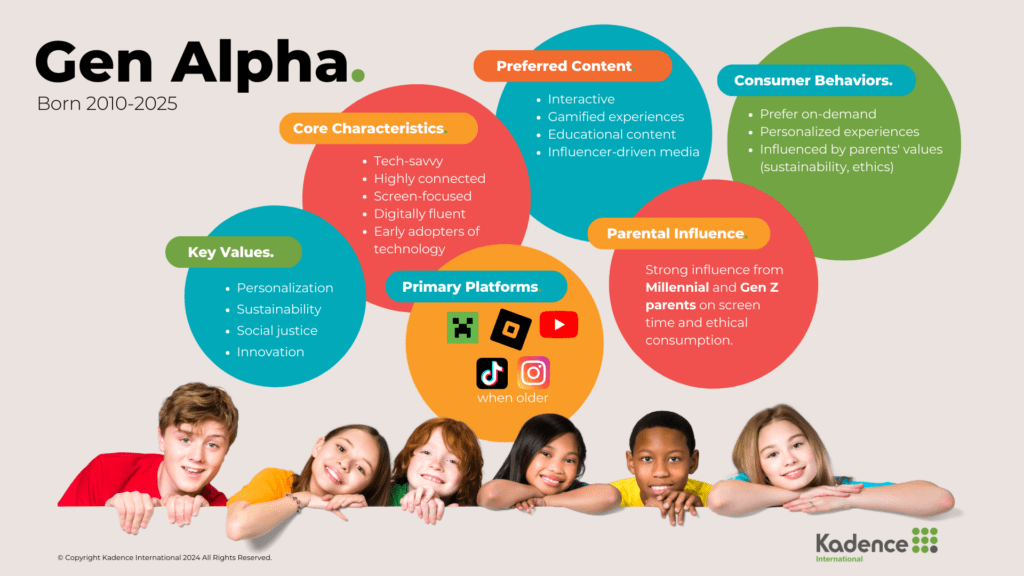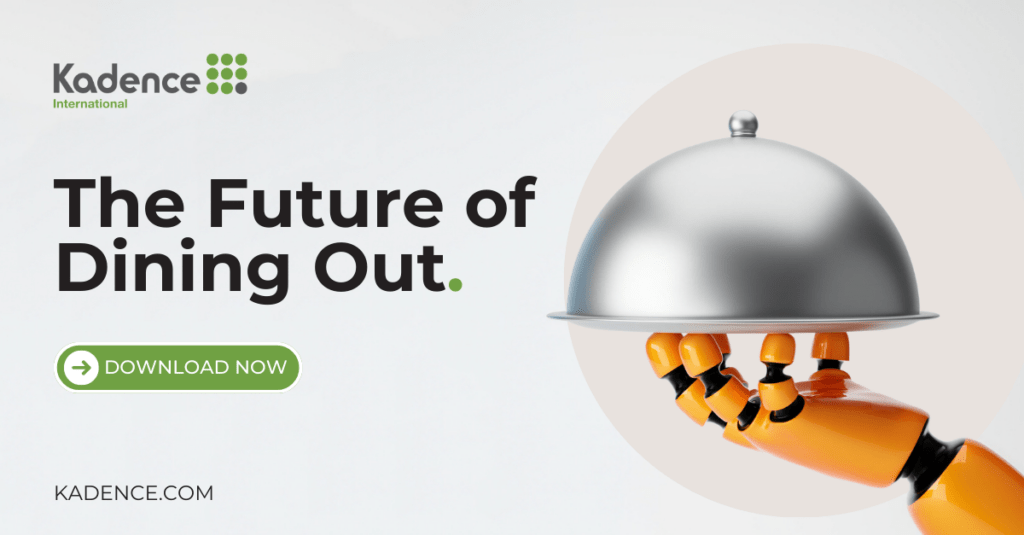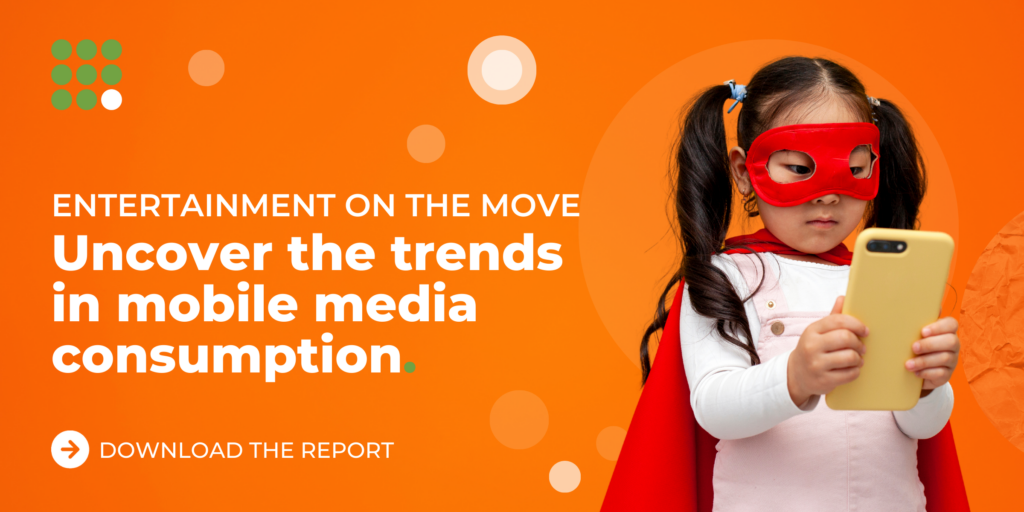Why is concept testing so integral to successful product launches? Because out of the 30,000 new products introduced each year, a staggering 95% fail to make a lasting impact on the market.
The alarming statistic highlights the importance of concept testing in product development. Your users’ opinions are the most valuable when it comes to your next product. Concept testing is a crucial step for brands, offering valuable insights into consumer preferences and behaviours before launching a product. It allows companies to refine their ideas, reduce risks, and ensure they meet the demands of their target audience.
What is Concept Testing?
Concept testing is a strategic method for evaluating consumer response before launching a product. It serves as a bridge between innovation and market readiness, ensuring new concepts align with consumer needs and preferences.
Adopting a futuristic and customer-centric approach, concept testing empowers brands to make informed decisions grounded in real-world data. It shifts the focus from internal assumptions to external validations, reducing the risk of costly product failures. By integrating advanced market research methodologies, brands can delve deeper into the consumer psyche, uncovering insights that drive innovation and differentiation.
Types of Concept Testing
Qualitative Concept Testing
Qualitative testing uses focus groups and interviews to gather deep insights into consumer attitudes and motivations.
Example: LEGO’s Co-Creation with Consumers
Source: Lego
LEGO has a tradition of involving customers in product development. Fans submit designs on the LEGO Ideas platform, and submissions with over 10,000 votes are reviewed for production. This qualitative approach taps into customer creativity and gathers in-depth insights. The LEGO NASA Apollo Saturn V set originated from a fan concept and became a best-seller, demonstrating the effectiveness of engaging consumers qualitatively.
Quantitative Concept Testing
Quantitative testing gathers survey data to statistically assess consumer preferences and predict market potential.
Example: McDonald’s Introduction of All-Day Breakfast
Source: McDonald’s
Overview
In response to declining sales, McDonald’s considered offering breakfast items all day. Before making this significant change, the company employed quantitative concept testing to assess its potential impact.
Concept Testing Approach
- Large-Scale Surveys: McDonald’s conducted extensive surveys targeting a broad demographic to gauge interest in all-day breakfast offerings.
- Data Analysis: Collected numerical data on consumer preferences, projected increase in visit frequency, and potential sales uplift.
Results
- Positive Consumer Response: Quantitative data showed strong interest, with a significant percentage of respondents indicating they would visit more often if breakfast were available all day.
- Informed Decision-Making: The statistical evidence provided confidence to proceed with the initiative.
Importance
- Successful Implementation: In 2015, McDonald’s launched an all-day breakfast nationwide in the U.S., leading to a notable increase in sales and customer satisfaction.
- Data-Driven Strategy: McDonald’s used quantitative concept testing to make an informed decision backed by solid numerical evidence.
Hybrid Approaches
Hybrid concept testing combines both qualitative and quantitative methods to offer a comprehensive understanding. It captures the depth of consumer insights while providing statistical validation, enabling brands to make well-informed decisions.
Emerging Technologies in Concept Testing
As the market evolves, so do the methodologies brands use to understand consumer behaviour. Advanced technologies are revolutionising concept testing, offering deeper insights and more precise data.
Artificial Intelligence and Machine Learning
AI and machine learning algorithms analyze vast datasets to identify patterns and predict consumer behaviour.
- Predictive Analytics: AI predicts market trends and consumer responses, enabling brands to make data-driven decisions.
- Personalization: Machine learning tailors concept tests to individual consumer profiles, enhancing the relevance and accuracy of feedback.
Unilever is using AI to transform its food production processes, leading to innovations like Knorr Zero Salt Cube and Hellmann’s Vegan Mayonnaise. The technology helps the company assess shelf life, texture, and taste, predict product performance, forecast flavour profiles, and analyze consumer preferences to enhance its food portfolio.
Virtual Reality (VR) and Augmented Reality (AR)
VR and AR create immersive environments where consumers interact with product concepts in simulated real-world settings.
- Enhanced Engagement: These technologies provide a realistic experience, capturing authentic reactions to product designs, features, and usability.
- Spatial Analytics: Brands gather data on how consumers navigate and interact within virtual spaces, offering insights into product placement and ergonomics.
Example: IKEA’s AR App for Furniture Placement
IKEA’s IKEA Place app uses AR to allow customers to visualise furniture in their homes before purchasing. During concept testing, IKEA used AR to present new furniture designs to consumers, gathering feedback on style, size, and functionality in a real-life context. This approach reduced uncertainty and improved product-market fit.
3. Neuromarketing Techniques
Neuromarketing involves measuring physiological responses to understand subconscious consumer reactions.
- Biometric Sensors: Tools like eye-tracking, EEG, and heart rate monitors capture immediate emotional responses to concepts.
- Emotional Metrics: Brands assess factors such as attention, engagement, and sentiment without relying on self-reported data, which can be biased.
Example: Hyundai’s Emotional Analytics in Car Design
Hyundai employed neuromarketing to test design concepts for its vehicles. Participants were connected to biometric sensors while interacting with virtual models of new car interiors and exteriors. The data revealed subconscious preferences for certain design elements, leading Hyundai to adjust features like dashboard layouts and control interfaces to enhance user satisfaction.
4. Blockchain for Data Integrity
Blockchain technology ensures the security and transparency of concept testing data.
- Immutable Records: Data collected is time-stamped and unchangeable, increasing trust in the feedback received.
- Consumer Incentivisation: Brands can offer tokens or rewards via blockchain to encourage participation, ensuring a diverse and engaged sample.
Example: Nestlé’s Transparent Supply Chain Initiatives
Nestlé achieved full transparency in its supply chain by adopting a Traceability solution. This solution equips its suppliers with the tools needed to comply with the rigorous sustainability and food safety requirements outlined in the company’s Responsible Sourcing Standards.
The Importance of Consumer Feedback
Placing the customer at the centre of the concept testing process yields significant benefits:
- Product Refinement: Direct feedback highlights strengths and weaknesses, guiding iterative improvements.
- Market Alignment: Understanding consumer expectations ensures the product fits current market dynamics.
- Risk Mitigation: Early detection of potential issues prevents costly adjustments post-launch.
- Competitive Advantage: Insights into consumer desires enable brands to offer unique value propositions.
By embracing these advanced and customer-centric methodologies, brands position themselves to meet and exceed market expectations. Concept testing becomes a catalyst for innovation, driving products that resonate deeply with consumers and stand the test of time.
The Concept Testing Process
An effective concept testing process involves several critical steps that guide a brand from initial ideas to actionable insights. By following a structured approach, companies can maximise the value of consumer feedback and make informed decisions that enhance product success.
#1. Identifying Target Audiences
Understanding potential customers is the foundation of concept testing. Brands must pinpoint the specific demographics, psychographics, and behavioural characteristics of their target audience.
Example:
A startup in the wearable technology industry plans to launch a new fitness tracker designed for outdoor enthusiasts. The company identifies its target audience as individuals aged 25-45 who engage in activities like hiking, trail running, and mountain biking. By focusing on this niche segment, the brand ensures the concept test will yield relevant and actionable feedback.
#2. Designing the Concept
This step involves developing a clear and compelling presentation of the product idea. It should include key features, benefits, and unique selling propositions that resonate with the target audience.
Example:
A beverage company aims to introduce a new line of organic, low-sugar fruit juices. The team designs the concept by highlighting attributes such as “100% organic ingredients,” “no added sugars,” and “sustainably sourced packaging.” Visual mock-ups of the product label and packaging are created to provide a tangible representation during testing.
#3. Selecting Testing Methods
Choosing the appropriate methods for gathering feedback is crucial. Options include surveys, focus groups, in-depth interviews, and online panels. The method should align with the objectives of the concept test and the characteristics of the target audience.
Example:
An automotive manufacturer developing an electric scooter for urban commuters opts for online surveys and virtual focus groups. Since the target audience is tech-savvy, time-constrained professionals aged 18-35, digital methods provide convenience and a broader reach.
#4. Analyzing Results and Making Data-Driven Decisions
After collecting feedback, brands must analyze the data to uncover insights. This involves identifying patterns, preferences, and potential areas for improvement. The findings inform decisions on whether to proceed, modify, or halt the product development process.
Example:
A skincare brand tests a new anti-ageing cream with natural ingredients. Analysis of survey results reveals that while participants appreciate the natural aspect, they are concerned about the product’s price point. Additionally, focus group discussions indicate a preference for sustainable packaging. Armed with this information, the brand decides to adjust the pricing strategy and redesign the packaging to align with consumer expectations.
Case Studies of Successful Concept Testing
Unilever’s Development of Axe (Lynx) Body Spray
Source: Unilever
Overview
In the early 2000s, Unilever sought to expand its personal care product line with a new deodorant body spray targeting young men. The company needed to ensure the product concept would resonate with the target market segment.
Concept Testing Approach
- Identifying Target Audience: Unilever focused on males aged 15-25, a group seeking products that aligned with their aspirations and lifestyle.
- Qualitative Research: The company conducted focus groups in multiple countries, including the UK, Australia, and South Africa, to gather insights into young men’s preferences and attitudes toward personal grooming products.
- Concept Development: Based on initial feedback, Unilever crafted several product concepts emphasising themes like attraction, confidence, and masculinity.
- Quantitative Surveys: The concepts were tested through surveys to assess appeal, uniqueness, and purchase intent. The surveys measured responses to different fragrances, packaging designs, and advertising themes.
Results
- Refined Branding: The testing revealed the target audience responded positively to a bold branding strategy centred around attraction and desirability. This led to the development of the provocative marketing campaign featuring the “Axe effect.”
- Product Variations: Insights prompted Unilever to create a range of fragrances to cater to diverse preferences within the target demographic.
- Global Adaptation: Concept testing in different regions allowed the company to tailor marketing messages to cultural nuances while maintaining a consistent global brand image.
Importance
- Consumer-Centric Innovation: By deeply understanding the desires and motivations of young men, Unilever developed a product that filled a gap in the market.
- Effective Marketing Strategy: The concept testing informed an advertising approach that resonated strongly with the target audience, contributing to Axe’s rapid growth.
- Market Success: Axe became one of Unilever’s leading brands in the male grooming sector, with a presence in over 60 countries.
Procter & Gamble’s Swiffer
Source: Swiffer
Overview
Procter & Gamble (P&G) introduced the Swiffer cleaning system after extensive concept testing revealed a market need for convenient and efficient cleaning solutions.
Concept Testing Approach
- Identifying Pain Points: P&G conducted in-home observations and focus groups to understand consumer frustrations with traditional mopping.
- Prototype Development: Based on insights, they developed prototypes of a quick-cleaning tool that didn’t require heavy buckets or extensive setup.
- Consumer Feedback: The prototypes were tested with target audiences, and feedback was gathered on usability, effectiveness, and design.
- Iterative Refinement: P&G refined the Swiffer based on consumer input, adjusting features like the swivel head and disposable pads.
Results
- Successful Launch: The Swiffer became one of P&G’s most successful product launches, capturing significant market share in the cleaning category.
- Market Expansion: The product line expanded to include variations like Swiffer WetJet and Swiffer Dusters, addressing additional consumer needs.
Google’s Pixel Smartphone Series
Source: USA Today
Overview
Entering the competitive smartphone market, Google aimed to create a device that integrated hardware and software seamlessly. The Pixel series needed to stand out against established players like Apple and Samsung.
Concept Testing Approach
- User Experience Focus: Google conducted extensive user experience (UX) research to understand what consumers valued most in a smartphone.
- Prototype Testing: Early versions of the Pixel were tested with select user groups to gather feedback on design, functionality, and features.
- Camera Emphasis: Concept testing revealed that consumers prioritised camera quality. Google invested in developing advanced camera technology and software enhancements.
- Feedback Integration: Consumer input led to improvements in battery life, user interface, and the introduction of unique features like unlimited photo storage.
Results
- Positive Reception: The Pixel smartphones received acclaim for their camera capabilities and pure Android experience.
- Brand Establishment: Google’s successful entry into the hardware market expanded its ecosystem and established Pixel as a competitive alternative in the premium smartphone segment.
Common Pitfalls in Concept Testing
Even well-established brands can stumble during the concept testing phase, leading to product failures that could have been avoided. Understanding these pitfalls can help brands refine their approach and increase the likelihood of a successful product launch.
Below are common mistakes and real-life case studies illustrating each pitfall.
Pitfall 1: Ignoring Qualitative Insights
Case Study: Google Glass
Source: All About Vision
Overview
In 2013, Google introduced Google Glass, an ambitious wearable technology featuring augmented reality capabilities. The device was a groundbreaking innovation, promising to revolutionise how users interact with digital information.
Mistakes Made
- Overlooking Privacy and Social Concerns: Google primarily relied on internal enthusiasm and quantitative data, neglecting in-depth qualitative research into consumer perceptions. They did not fully explore how the public would feel about potential privacy invasions due to the device’s ability to record videos and take photos discreetly.
- Neglecting Social Acceptability: The company underestimated the social implications of wearing a device that looked unconventional, which led to discomfort and scepticism among the general public.
Outcome
- Negative Public Perception: Privacy issues and the awkward appearance of Google Glass led to significant public backlash. The term “Glasshole” emerged to describe users, highlighting the device’s social stigma.
- Limited Adoption: Due to these concerns, Google Glass failed to gain widespread consumer acceptance and was discontinued for the consumer market in 2015. Google shifted its focus to enterprise applications where the device found more practical use.
Lesson Learned
- Importance of Qualitative Research: Engaging in qualitative research methods like focus groups and ethnographic studies could have revealed societal concerns and usability issues. This insight would have allowed Google to address these challenges before a full-scale launch.
Pitfall 2: Relying Solely on Quantitative Data
Case Study: Crystal Pepsi
Source: Buzzfeed
Overview
In 1992, PepsiCo launched Crystal Pepsi, a caffeine-free, clear cola designed to offer a “pure” alternative to traditional colas. The product was developed to capitalise on the early 1990s trend favouring clarity and purity in consumer goods.
Mistakes Made
- Neglecting Consumer Perceptions: PepsiCo focused heavily on quantitative taste tests, which indicated consumers liked the flavour. However, they failed to conduct qualitative research to understand consumer expectations and perceptions of a clear cola.
- Misaligned Branding: The clear appearance contradicted the established image of what a cola should look like, leading to confusion. Consumers associated clear sodas with citrus or lighter flavours, not the traditional cola taste.
Outcome
- Consumer Confusion: The mismatch between appearance and flavour led to consumer scepticism and disappointment.
- Poor Sales Performance: Initial curiosity drove trial purchases, but repeat sales were low. Crystal Pepsi was discontinued in the United States by 1994.
Lesson Learned
- Need for a Balanced Approach: Combining quantitative taste test data with qualitative insights about consumer perceptions could have alerted PepsiCo to potential issues. Understanding the importance of brand expectations might have led to different marketing strategies or product adjustments.
Pitfall 3: Underestimating Market Competition
Case Study: Microsoft’s Zune Media Player
Source: Jama Software
Overview
In 2006, Microsoft entered the portable media player market with the Zune, aiming to compete directly with Apple’s iPod. The device featured music and video playback and offered a subscription service for music downloads.
Mistakes Made
- Insufficient Competitive Analysis: Microsoft underestimated the strong brand loyalty Apple had cultivated with the iPod and the seamless integration of the iTunes ecosystem.
- Lack of Differentiation: Zune did not offer significant advantages or unique features to entice consumers away from the iPod. The initial models lacked innovation and did not resonate with the target audience.
Outcome
- Low Market Adoption: Despite substantial investment, Zune failed to gain significant market share. Consumers saw little reason to switch from the iPod.
- Product Discontinuation: Microsoft discontinued the Zune hardware line in 2011 and shifted focus to software and services.
Lesson Learned
- Thorough Market Research: Effective concept testing should include comprehensive market and competitor analysis. Understanding the competitive landscape and consumer loyalty is crucial for identifying opportunities and threats.
The Importance of a Balanced Approach
These case studies highlight the necessity of integrating both qualitative and quantitative research methods in concept testing:
Qualitative research provides deep insights into consumer attitudes, beliefs, and emotions and helps uncover underlying motivations and potential barriers to adoption. Quantitative research offers statistical validation of trends and preferences, allowing brands to measure the extent of consumer attitudes across a larger population.
The Benefits of Combining Both Methods
- Comprehensive Understanding: A balanced approach ensures a holistic view of the market, combining the depth of qualitative insights with the breadth of quantitative data.
- Risk Mitigation: Identifies potential issues from multiple perspectives, reducing the likelihood of overlooking critical factors that could lead to product failure.
- Informed Decision-Making: Empowers brands to make strategic choices based on a full spectrum of consumer feedback, enhancing the chances of a successful product launch.
Recommendations for Brands Conducting Concept Testing
To maximise the effectiveness of concept testing and increase the likelihood of a successful product launch, brands should adopt strategic approaches that leverage both innovative techniques and consumer insights. Here are practical recommendations for conducting effective concept testing supported by real-life examples.
#1. Engage Diverse Consumer Segments for Broader Insights
Why It Matters
Reaching out to a diverse audience ensures the feedback collected represents the broader market. Inclusivity helps identify varying preferences, cultural nuances, and potential market segments that might otherwise be overlooked.
Strategies
- Demographic Diversity: Include participants from different age groups, genders, income levels, and geographic locations to capture a wide range of perspectives.
- Psychographic Profiling: Understand consumers’ lifestyles, values, and interests to tailor concepts that resonate on a deeper level.
- Global Perspectives: For international brands, conduct concept testing in multiple countries to account for regional differences.
Real-Life Application: Nike’s Inclusive Product Development
Source: NBC News
Nike exemplifies engaging diverse consumer segments through the development of the Nike Pro Hijab. Recognising the need for athletic wear that accommodates Muslim female athletes, Nike collaborated with athletes like Zahra Lari, an Emirati figure skater, to gather insights on design, functionality, and cultural appropriateness. This inclusive approach led to a product that not only filled a market gap but also reinforced Nike’s commitment to diversity and empowerment.
#2. Use Advanced Technology and Tools for Data Analysis
Why It Matters
Leveraging technology enhances the accuracy and efficiency of data collection and analysis. Advanced tools can uncover patterns and insights that traditional methods might miss, enabling brands to make data-driven decisions with greater confidence.
Strategies
- Artificial Intelligence and Machine Learning: Utilise AI algorithms to analyze large datasets quickly, identifying trends and predicting consumer behaviour.
- Data Visualisation Tools: Employ software that transforms complex data into easy-to-understand visual formats, aiding in quicker interpretation.
- Mobile and Online Platforms: Use digital channels to reach consumers where they are most active, increasing participation rates and real-time feedback.
Real-Life Application: Netflix’s Data-Driven Content Development
Source: Marketplace
Netflix harnesses AI and machine learning to analyze viewer data, which informs both content recommendations and original content creation. By examining viewing habits, preferences, and engagement metrics, Netflix developed successful original series like “House of Cards” and “Stranger Things.” This data-centric approach allows Netflix to predict which concepts will resonate with audiences, optimising investment in content production.
Regularly Update Concept Testing Strategies Based on Market Trends
Why It Matters
Markets are dynamic, with consumer preferences and competitive landscapes continually evolving. Regularly updating concept testing methodologies ensures brands remain aligned with current trends and can anticipate future shifts.
Strategies
- Continuous Market Monitoring: Stay informed about industry developments, competitor activities, and changing consumer behaviours to adjust testing approaches accordingly.
- Agile Testing Methods: Adopt flexible testing frameworks that allow for quick iterations and adjustments based on initial feedback.
- Incorporate Trend Analysis: Use tools that provide insights into emerging trends, such as social listening platforms and industry reports.
Real-Life Application: Spotify’s Agile Methodology
Source: Medium
Spotify employs an agile framework known as the “Spotify Model” to manage its rapidly growing teams and adapt to market changes efficiently. This approach enables continuous improvement and swift adaptation to user feedback. Features like Discover Weekly and Wrapped were developed by analyzing user behaviours and preferences, allowing Spotify to stay ahead of trends and enhance user engagement.
Foster Collaborative Innovation
Why It Matters
Collaboration with consumers and partners can lead to more innovative solutions. Open innovation expands the pool of ideas and accelerates the development of successful products.
Strategies
- Co-Creation with Consumers: Involve customers directly in the ideation and testing process, fostering a sense of ownership and increasing the likelihood of market acceptance.
- Cross-Industry Partnerships: Collaborate with organisations outside your industry to bring fresh perspectives and expertise.
- Internal Collaboration: Encourage interdisciplinary teams within the company to contribute to concept development and testing.
Real-Life Application: Starbucks’ “My Starbucks Idea” Platform
Source: Research Gate
In 2008, Starbucks launched the “My Starbucks Idea” platform, an online community that invited customers to submit ideas for new products, services, and improvements. This initiative aimed to engage customers directly in the innovation process, harnessing their insights to enhance the brand’s offerings.
Customers could submit ideas, vote on submissions, and discuss concepts with other community members and Starbucks representatives. Over 150,000 ideas were submitted, and Starbucks implemented more than 300. Notable examples include free Wi-Fi in stores, the introduction of coconut milk as a non-dairy option, and the Starbucks Rewards loyalty program.
The platform provided updates on the status of ideas, creating a transparent feedback loop that encouraged continued participation. Implemented ideas increased customer satisfaction and drove business growth, demonstrating the tangible benefits of collaborative innovation.
Prioritise Ethical Considerations and Data Privacy
Why It Matters
Data privacy is a significant concern, and ethical practices in concept testing build consumer trust and protect brand reputation.
Strategies
- Transparent Data Collection: Clearly communicate how consumer data will be used and ensure compliance with regulations like GDPR.
- Ethical Incentivisation: Offer fair incentives for participation without manipulating or pressuring consumers.
- Cultural Sensitivity: Be mindful of cultural differences and respect local customs during testing.
Real-Life Application: Apple’s Commitment to Privacy
Source: Apple
Apple integrates privacy into the development process of its products, emphasising user control over personal data. Features like on-device processing for Siri and differential privacy techniques demonstrate Apple’s dedication to protecting user information. This commitment enhances consumer trust, encouraging participation in concept testing and product feedback initiatives.
Final Thoughts
Concept testing empowers brands to make data-driven decisions that align with consumer needs and preferences. It fosters a culture of innovation where products are not just launched but are positioned to thrive. By understanding and addressing potential pitfalls before they escalate, brands can save substantial resources and strengthen their market position.
Take the next step in solidifying your product development strategy. Contact us to explore how our market research expertise can help you harness the full potential of concept testing and propel your brand toward innovation and growth.













 Senior Marketing Executive
Senior Marketing Executive Sales & Marketing
Sales & Marketing General Manager PR -Internal Communications & Government Affairs
General Manager PR -Internal Communications & Government Affairs Vital Strategies
Vital Strategies
 Customer Intelligence Director
Customer Intelligence Director